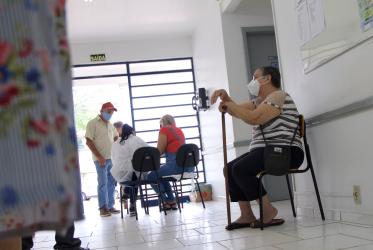Latin America
Latin America as a region is characterized by the majority Catholic Church, minority Protestant and Evangelical churches and groups, rapidly growing Pentecostal churches and small Orthodox diaspora churches. Roman Catholicism came with the Spanish conquista and Portuguese colonization. The Orthodox and some of the Protestant and Evangelical churches were established by immigrants; others are the fruit of missionary work by foreign denominations, mostly from North America, who also brought Anglicanism to the region. Pentecostalism emerged in Latin America as early as 1910 (e.g. in Chile). It expanded in the second half of the 20th century under the influence of evangelistic mass campaigns from outside and charismatic leaders from within the region and continues to grow. There is also an important charismatic movement in the Catholic Church.
The ecumenical movement in Latin America took shape in the 1960s with the formation of many action groups, networks and study centres dealing with issues like social justice, popular education, human rights etc. These action-oriented structures were mostly set up by individuals, not by the churches. Some of these were organized at the regional level. The theology of liberation was an important source of inspiration for ecumenical action. Another expression of this popular ecumenism were the "base communities" formed by Christians from different churches who sought a spiritual basis for their social commitment. It took until 1978 before the Protestant and several Evangelical and Pentecostal churches in Latin America decided to create their own regional ecumenical organization, the Latin American Council of Churches (CLAI), founded in 1983. Since then CLAI has also become a focal point for the earlier ecumenical groups and networks. There are 27 WCC member churches in Latin America representing about 4,4 million Christians. The Latin American region stretches from Mexico in the north all the way down to the southern tips of Argentina and Chile. It includes Cuba, the Dominican Republic and Puerto Rico in the Caribbean but not the English, French and Dutch-speaking countries on the continent. Spanish and Portuguese as the two major languages confer a certain homogeneity to the region. Since several decades there is a strong movement of the indigenous peoples of Latin America seaking to affirm their cultural and religious heritage and identity, in the society as well as in the churches.
Diverse forms of groupings of churches at the national level of the countries exist in Latin America. Many of these are federations or councils of Protestant and/or Evangelical churches. In two countries, Brazil and Panama the Catholic Church is a member of the national ecumenical organization. Elsewhere, e.g. in Argentina and Chile new structures have been set up alongside the existing federations to allow for a greater number of churches, including Catholic and Orthodox to come together. There are also evangelical alliances or fraternities in most countries and pentecostal federations or councils in some. At the regional level the main church bodies are:
- Latin American Council of Churches (CLAI)
- Latin American Episcopal Conference (CELAM, Catholic)
- Latin American Evangelical Fellowship (CONELA)

